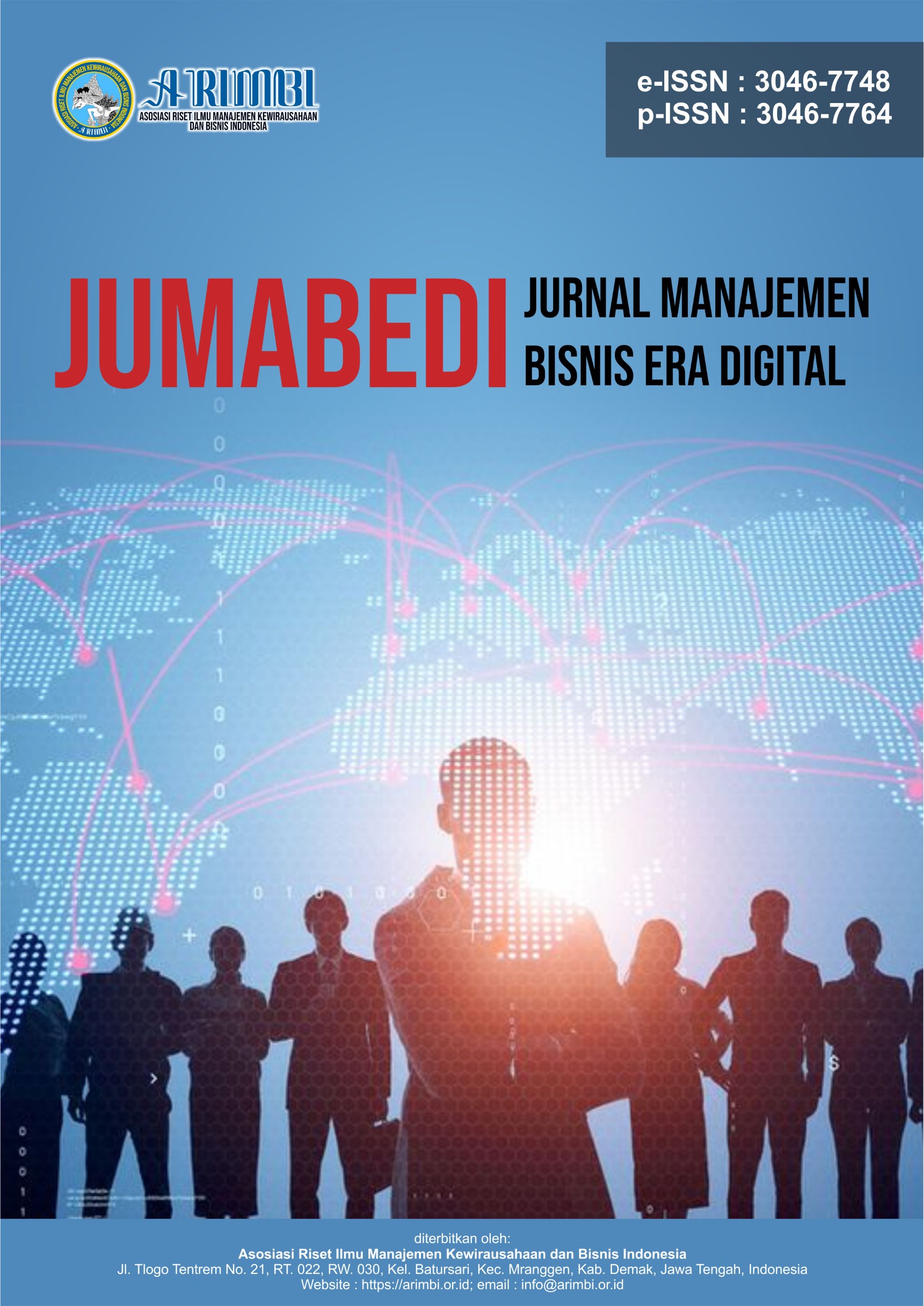Pengaruh Online Advertising Terhadap Keputusan Pembelian Produk Skintific: Peran Mediasi Trust dan Social Media Engagement (Studi Pada Konsumen Produk Skintific di Kota Malang)
DOI:
https://doi.org/10.61132/jumabedi.v2i3.698Keywords:
digital marketing, Online Advertising, purchasing decisions, Social Media Engagement, TrustAbstract
This study aims to analyze the influence of Online Advertising on purchasing decisions for Skintific products by considering the mediating role of Trust and Social Media Engagement. Skintific, as a digital-native skincare brand, actively utilizes digital marketing strategies through various social media platforms such as Instagram, Tiktok, or e-commerce like Shopee to increase consumer appeal, especially in Malang City. This study uses a quantitative approach with the Partial Least Squares Structual Equation Modeling (PLS-SEM) method to test the relationship between variables. The sample was obtained through a purposive sampling technique with 114 respondents who are active consumers of Skintific. The results of this study indicate that Online Advertising has a significant effect on purchasing decisions, both directly and through the mediation of Trust and Social Media Engagement. Theoretically, this study extends the application of the Theory of Reasoned Action (TRA) in explaining the formation of attitudes and subjective norms of consumers towards digital advertising, as well as the Technology Acceptance Model (TAM) which shows how perceived ease and usefulness of digital advertising content affect user engagement. Customer Trust Theory in E-Commerce is used to explain how trust is formed in online transactions, while Relationship Marketing Theory emphasizes the importance of long-term interactions between brands and consumers. The Theory of Planned Behavior (TPB) expands this framework by adding the construct of behavioral control, which explains how consumers' perceptions of ease and barriers contribute to purchasing decisions. Social Influence Theory is used to understand the influence of social norms and online community opinions on purchase intentions, and Uses and Gratifications Theory (UGT) to examine consumer motivations in accessing and interacting with digital content based on information needs, affection, and self-identity. This research provides theoretical contributions in strengthening the relevance of integrating several consumer behavior theories in a digital context.
Downloads
References
Bleier, A., & Eisenbeiss, M. (2015). Personalized Online Advertising Effectiveness: The Interplay of What, When, and Where. Marketing Science. https://doi.org/10.1287/mksc.2015.0930
Digital Marketing Institute. (2023). 2023 Digital Advertising Trends Report. Retrieved from: https://digitalmarketinginstitute.com
Ducoffe, R. H. (1996). Advertising value and advertising on the web. Journal of Advertising Research. https://doi.org/10.1080/00218499.1996.12466626
Engel, J. F., Blackwell, R. D., & Miniard, P. W. (1995). Consumer behavior (8th ed.). New York: Dryder.
Huang, E., & Benyoucef, M. (2009). User Experience in Social Commerce: A Framework and Design Guidelines. International Journal of Information Management.
Kannan, P. K., & Li, H. A. (2017). Digital Marketing: A Framework, Review and Research Agenda. International Journal of Research in Marketing, 34(1), 22-45. https://doi.org/10.1016/j.ijresmar.2016.11.006
Kim, J., & Park, S. (2019). Social Media Engagement and Consumer Perception in Digital Marketing.International Journal of Consumer Behavior, 45(3), 212-230.
Kotler, P. &. (2016). Marketing Management (15th ed.). Pearson Education.
Morgan, R. M., & Hunt, S. D. (1994). The Commitment-Trust Theory of Relationship Marketing. Journal of Marketing, 58(3), 20-38. https://doi.org/10.1177/002224299405800302
Muntinga, D. G., Moorman, M., & Smit, E. G. (2011). Introducing COBRAs: Exploring motivations for brand-related social media use. International Journal of Advertising, 30(1), 13-46. https://doi.org/10.2501/IJA-30-1-013-046
Pagani, M., Hofacker, C. F., & Goldsmith, R. E. (2011). The influence of personality on active and passive use of social networking sites. Psychology & Marketing, 28(5), 441-456. https://doi.org/10.1002/mar.20395
Pavlou, P. A., & Stewart, D. W. (2000). Measuring the effects and effectiveness of interactive advertising. Journal of Interactive Advertising. https://doi.org/10.1080/15252019.2000.10722044
Rodgers, S., & Thorson, E. (2000). The interactive advertising model: How users perceive and process online ads. Journal of interactive advertising, 1(1), 41-60. https://doi.org/10.1080/15252019.2000.10722043
Samaradiwakara, S. (2024). Evolution of the Zero Moment of Truth Concept: Analyzing the Historical Development and Conceptual Evolution of the ZMOT Framework in Marketing Literature.
Sharma, R., & Gupta, A. (2022). Digital Marketing and Consumer Decision Making in Beauty Industry.Journal of Digital Commerce and Consumer Behavior, 52(4), 145-167
SimilarWeb. (2023). Skintific Website Performance Analytics. Retrieved from: https://www.similarweb.com
Statista. (2024). Indonesia: Skincare - Revenue in million U.S. dollars.
Statista. (2024). Indonesia: Skincare - Revenue in million U.S. dollars.
Trusov, M., Bucklin, R. E., & Pauwels, K. (2009). Effects of word-of-mouth versus traditional marketing: Findings from an internet social networking site. Journal of Marketing, 73(5), 90-102. https://doi.org/10.1509/jmkg.73.5.90
Waluyo, D. (2024, AGUSTUS 19). Pasar Kosmetik Indonesia Melesat 48 Persen, Peluang IKM Berinovasi. Retrieved from Indonesia.go.id.
Downloads
Published
Issue
Section
License
Copyright (c) 2025 Jurnal Manajemen Bisnis Era Digital

This work is licensed under a Creative Commons Attribution-ShareAlike 4.0 International License.





